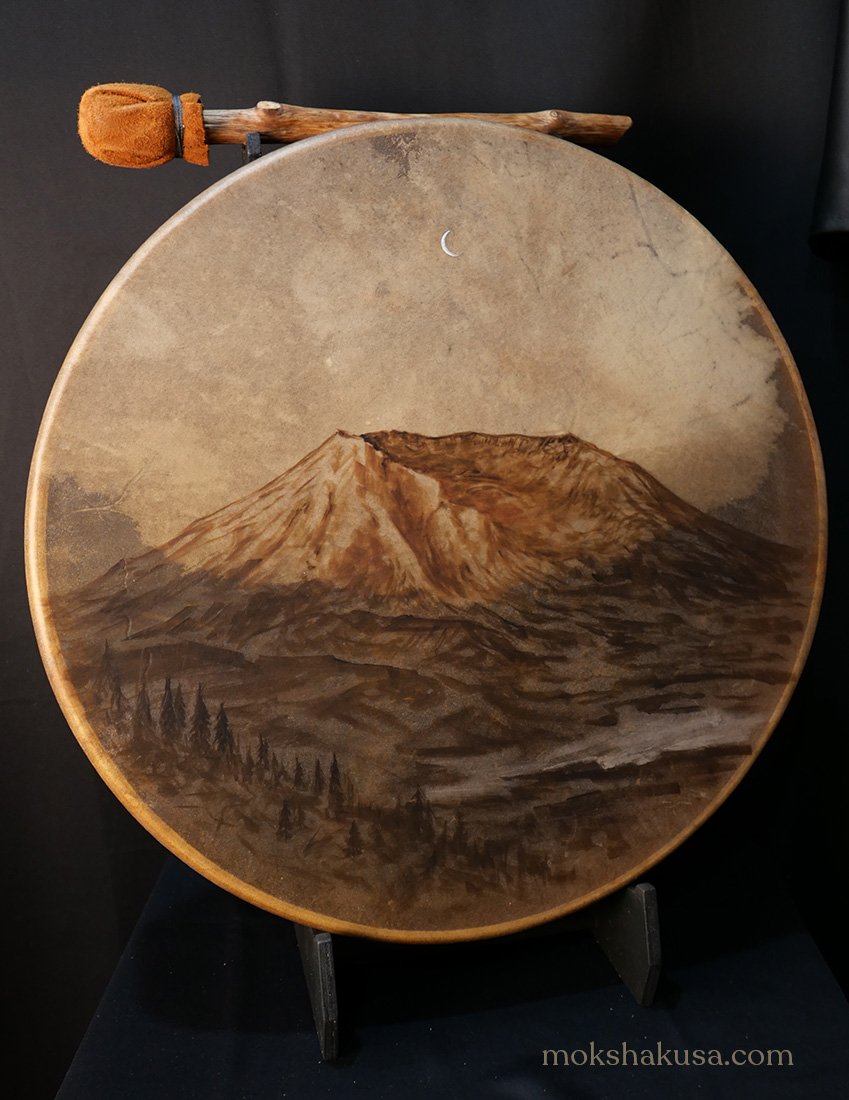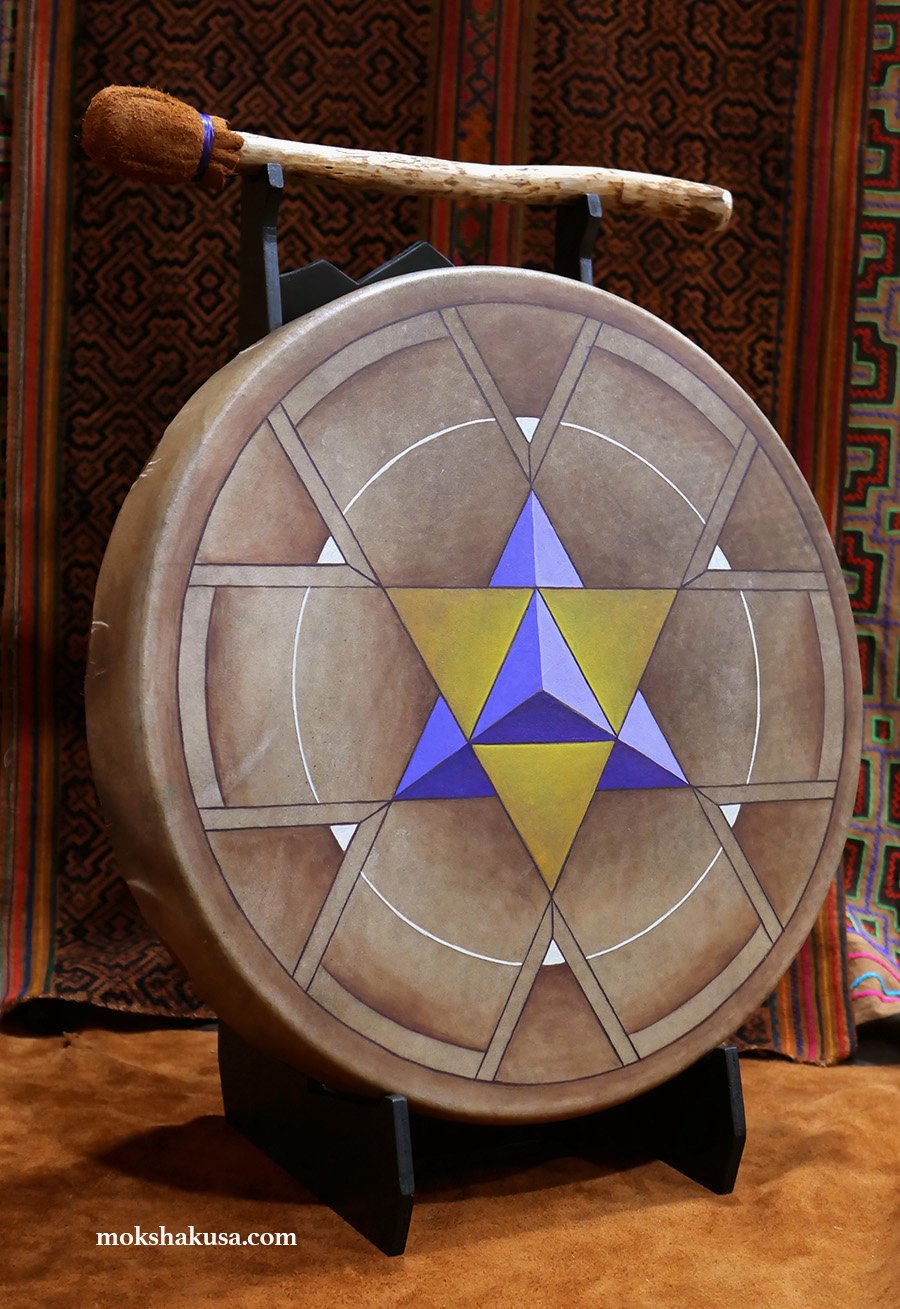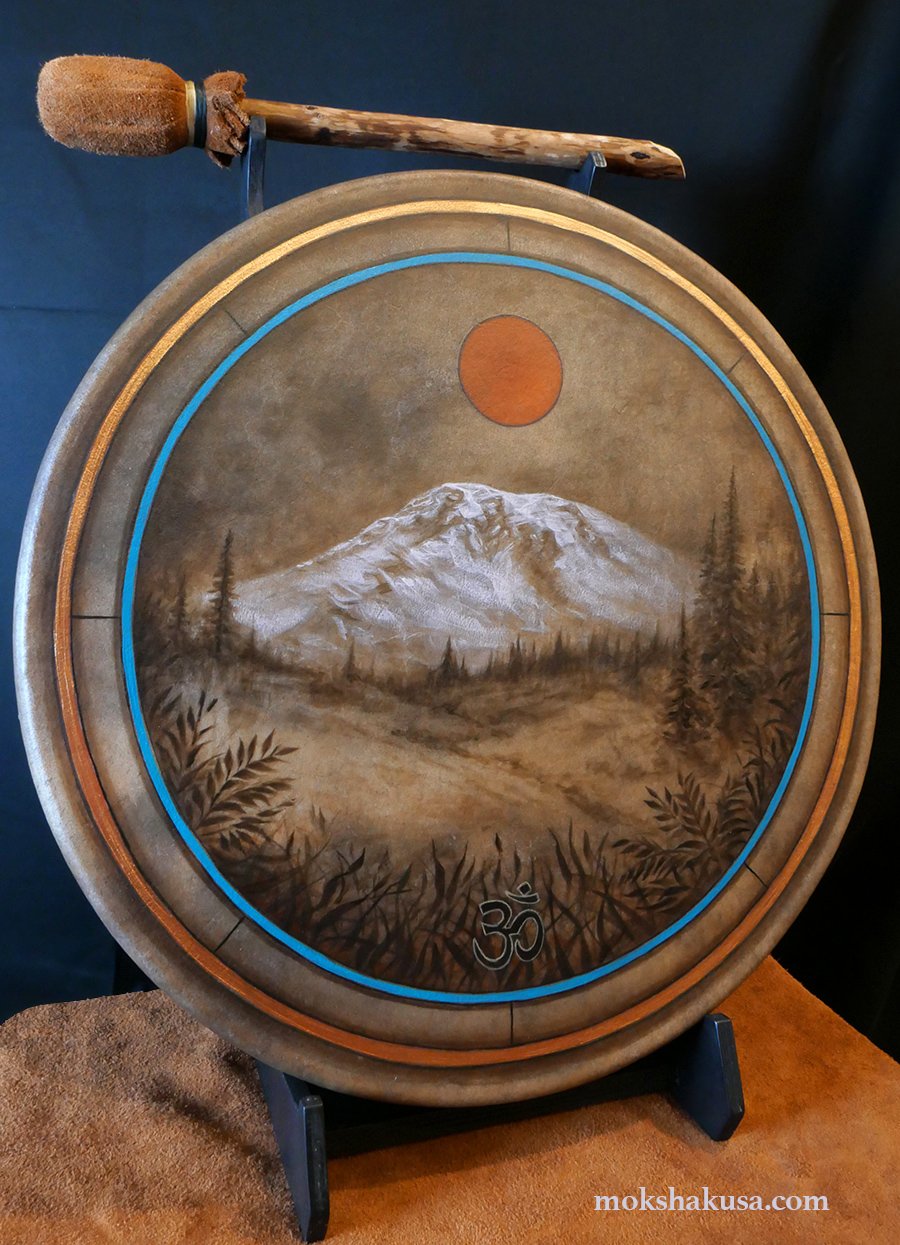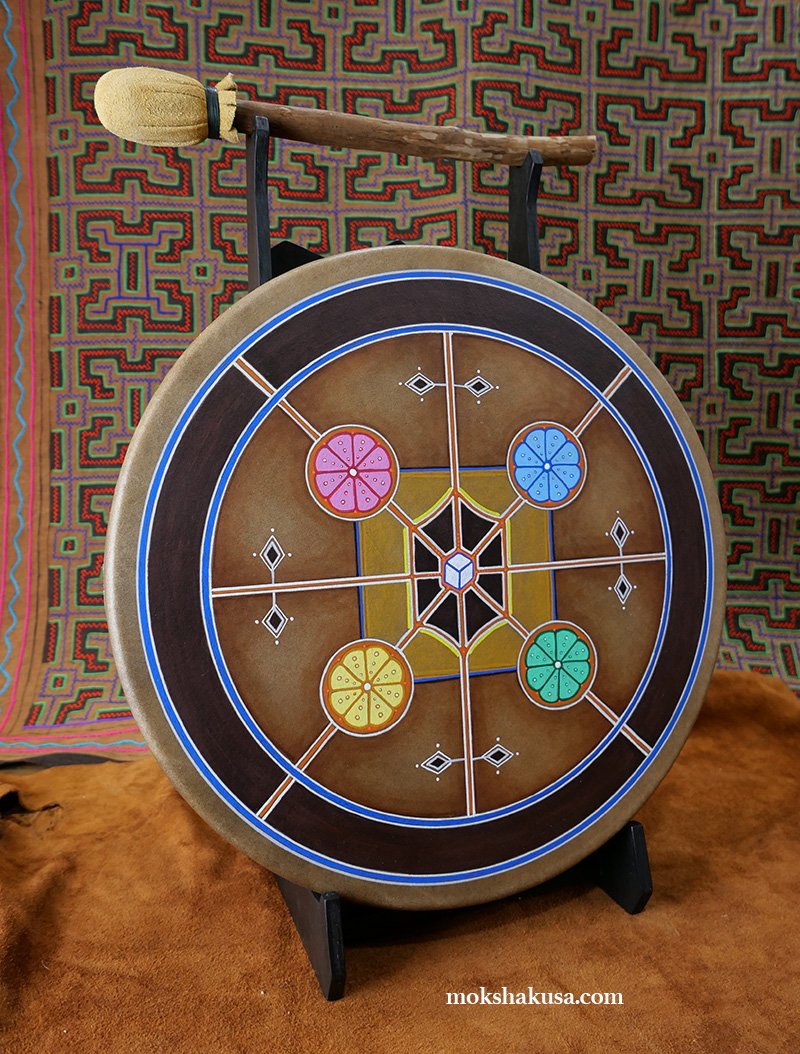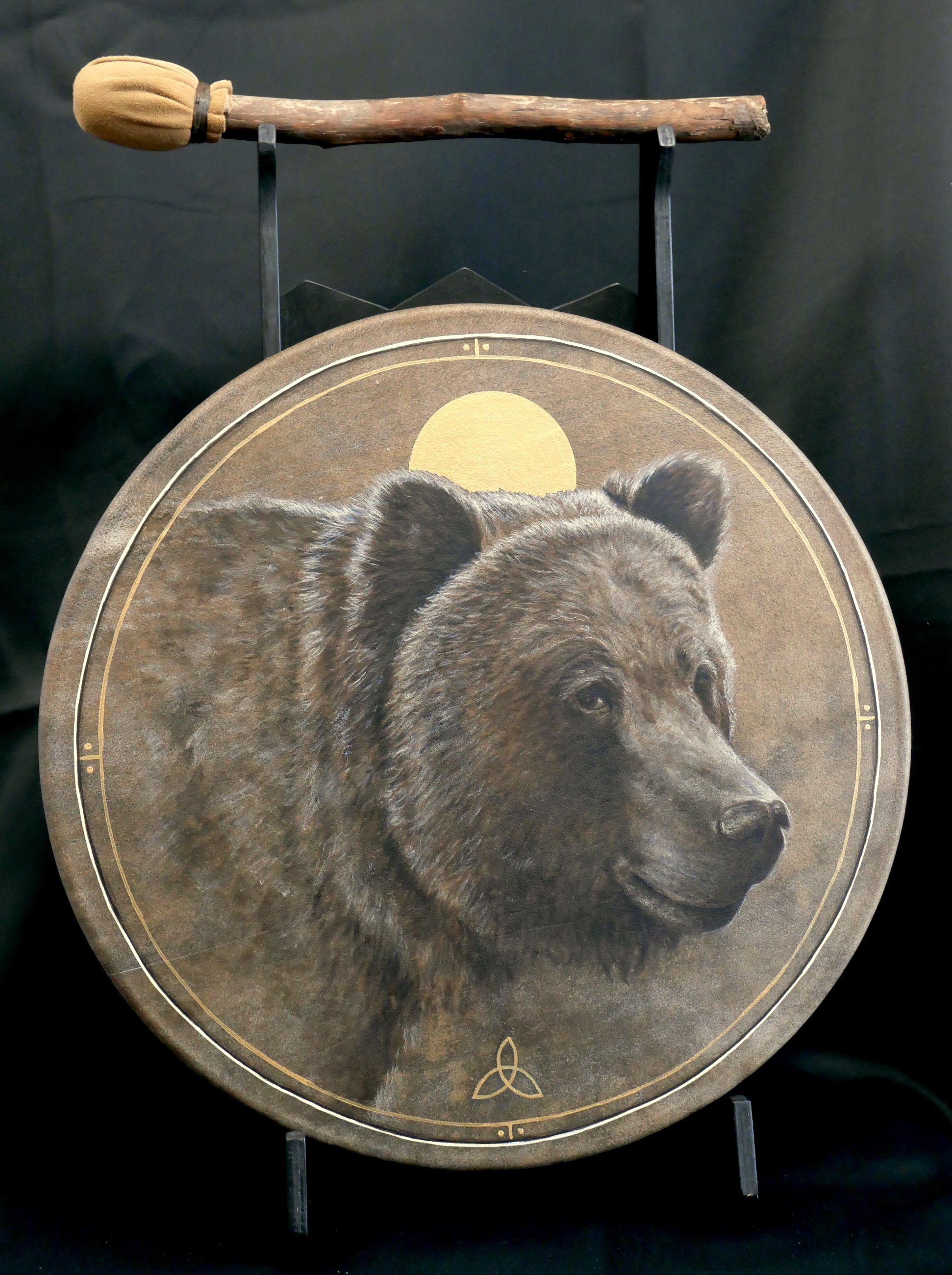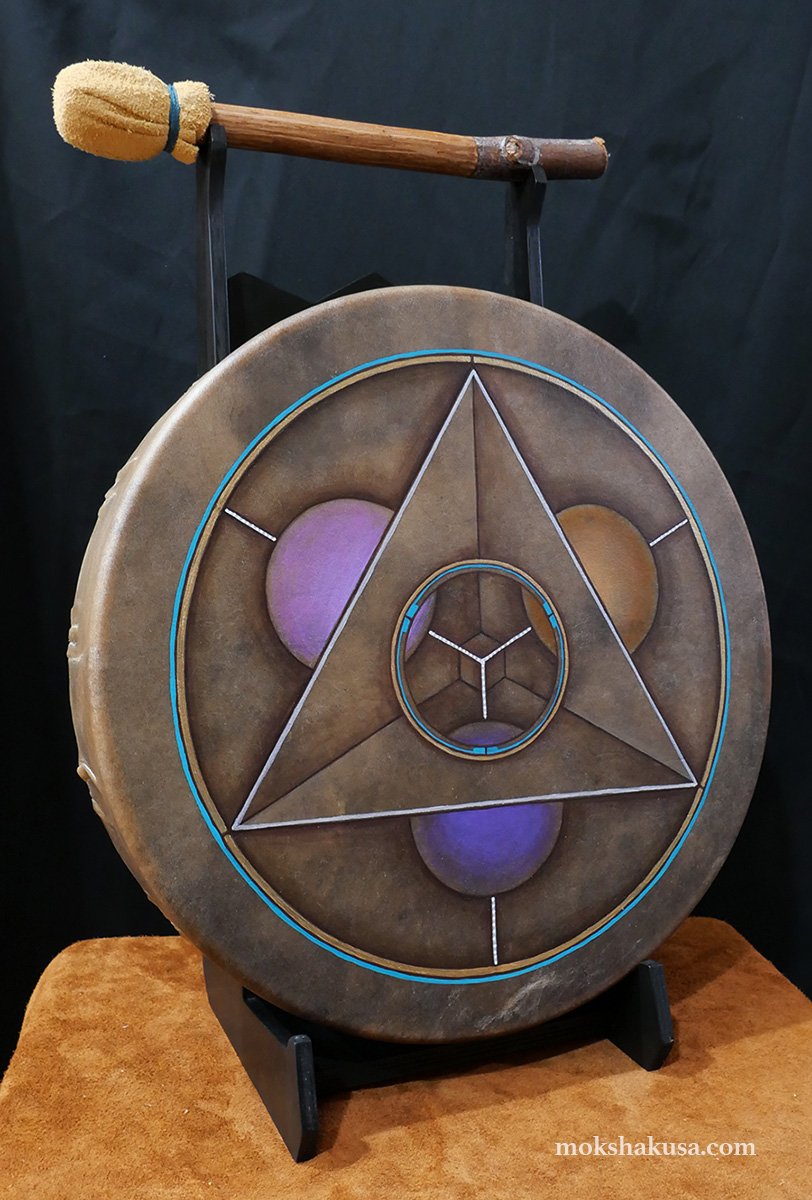The Voice of the Painted Drum
The drum is very special to me, I’ve been a drummer since I was 15 (that was a long time ago) and rhythm is inherently embedded deep within me. I’ve also been a full time painter for the last 12 years and so it felt only natural that I bring these two loves together into one art: the art of making and painting a sacred drum. I’m excited to see this special merger of art and rhythm come together.
Also called a hand drum or hoop drum, these healing instruments are lovingly made from locally sourced materials, they are made in ceremony and with the purest intent. I buy whole hides from a native shop in Washington State and cut the heads and ties myself, the frames are purchased from the same supplier which I believe has integrity, however because I don’t know how the animal was killed, and out of general respect and gratitude for the animals and the trees that were sacrificed, these drums are always made in prayer.
One of my favorite commissioned drums
In my effort to waste nothing, the smaller pieces of hide are used to make hand-stitched rattles. The handles for the drum mallets and rattles are made from branches I find on the ground around my wooded property. I offer these drums with the intention that they can be used in sacred ceremony, shamanic journeys and in making music to share and play with others. The drum is not just a musical instrument but an instrument of healing. I like to give each one a blessing before I send it off, and imagine the happiness it can bring on its journey out into the world.
Buffalo rattle with feathers
When making a drum the hide must be soaked until it is completely soft and workable. After the drum is built it can take 3 or 4 days before the drum fully dries and its unique voice starts to develop. After this period I sit with the drum for awhile as its voice and subtle dynamics develop. During this period is when a vision for the art will come to me. Because each drum is so different I don’t plan what I will paint on it until I have gotten to know its personality. It makes me think, how do people name a baby before it is born and they see what they’ve got!?
A word about how environment affects a drum:
A rawhide drum is like a living thing with a personality and many many subtleties and nuances that are always changing as conditions change. Each drum is unique in look and feel, no two are alike. I live in Washington State and stretch the drums pretty tight because they work best in this environment, but when they are moved to a very different environment they will change in sound and become tighter or looser. A drum can be tuned by either spraying it with water to lower its tone or heating it up to raise it. I find that they change a lot with the seasons as well, and that it’s easier to lower a drum’s tone than to raise it, so that is why I stretch them tighter. I like the resonance of the drum when it is tighter, it can really sing when you are playing it!
“…if we can walk through our lives with love we will be in time with the heartbeat of the Universe.”
More about the history of the drum:
The sound that any of us heard for the first nine months of our lives was a beat in steady rhythm: the sound of our mother's heart. It is this rhythm that drove the beat of our own heart as we emerged into the world, and if we can walk through our lives with love we will be in time with the heartbeat of the Universe. The drum is a tool and a reminder that helps us find and stay connected to this rhythm.
According to Michael Drake, the drum is believed to have existed at least 30 thousand years ago, if not longer. It was used in every culture as a tool of healing, journeying, theatrical story telling and music. This ancient instrument of healing is needed now more than ever to be shared and used by people of all cultures and religions. Regardless of a persons heritage, the drum wants to be used to help the human spirit connect to the heartbeat of the Earth. I humbly offer these drums for this purpose.
This beauty is a 18 inch elk hide on a maple frame, painted with a medicine wheel inspired design.
Each drum has a soft suede handle.
In the picture above you can see how the drums are laced. The lacing is one continuous piece of rawhide, and there are no knots. I learned this method from Patrick Pinson, the owner of Cedar Mountain Drums in Portland, Oregon.
While I am a relatively new drum maker, I am dedicated to learning and growing and making the best possible drum I can. I’m not selling these to make money, I’m selling them because I believe in the process and the healing power of the drum. Also, a drumhead is perhaps the oldest ‘canvas’ for creating art, and that’s especially exciting to me!
I’ll be adding new drums to my shop as I have time, and that may only be a few drums a month or less. Check back often or let me know if you’re interested in reserving one. I’m open to custom orders as well. Currently I’m making two sizes, 16 and 18 inches, and I’m working with either elk or buffalo hides. Prices range from 225 to over 400 USD depending on hide, size and complexity of the paint job.
If you’ve read this far, thank you for your interest and I hope that I can soon make a very special drum just for you. Feel free to browse the drum gallery or check out my shop for currently available drums and rattles.
Blessings,
Moksha Kusa







